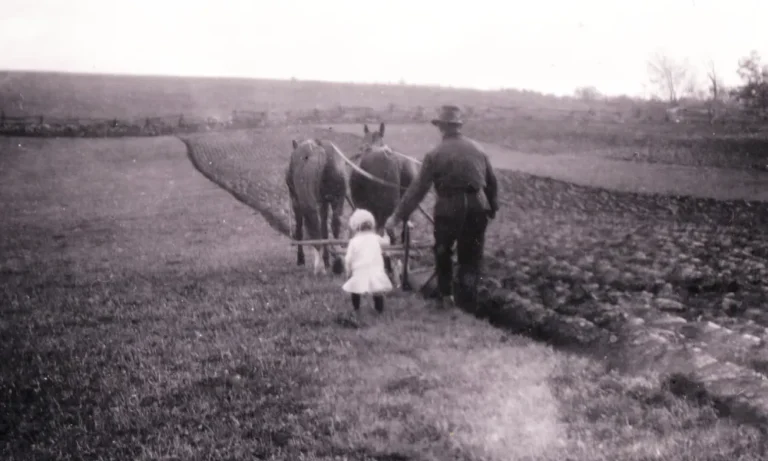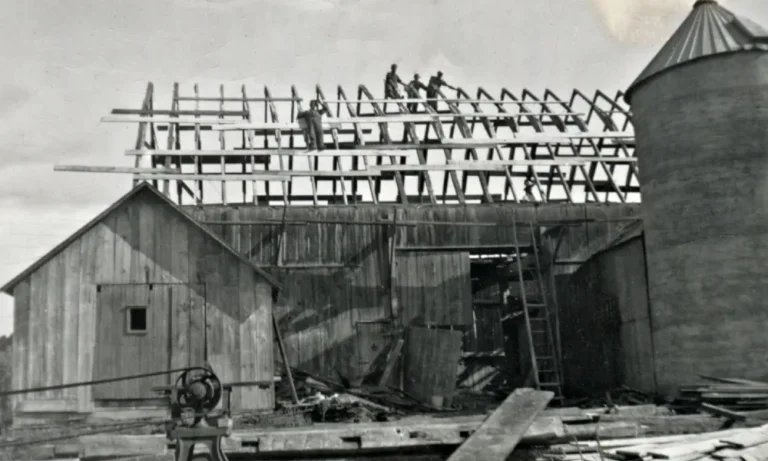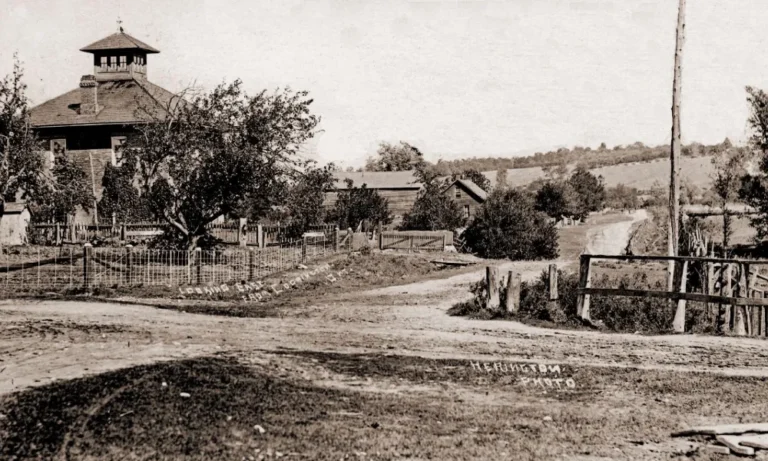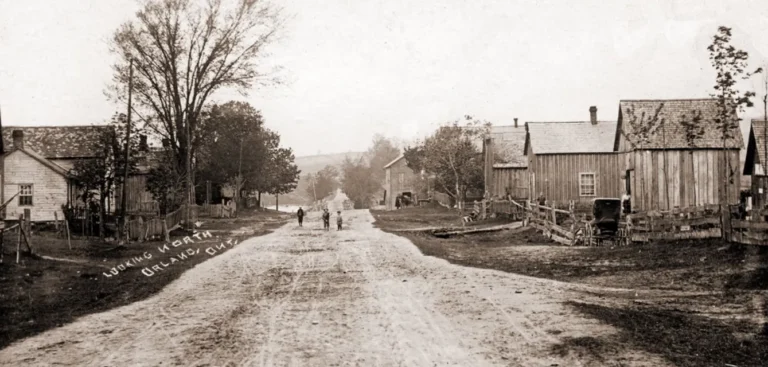- Home
- About
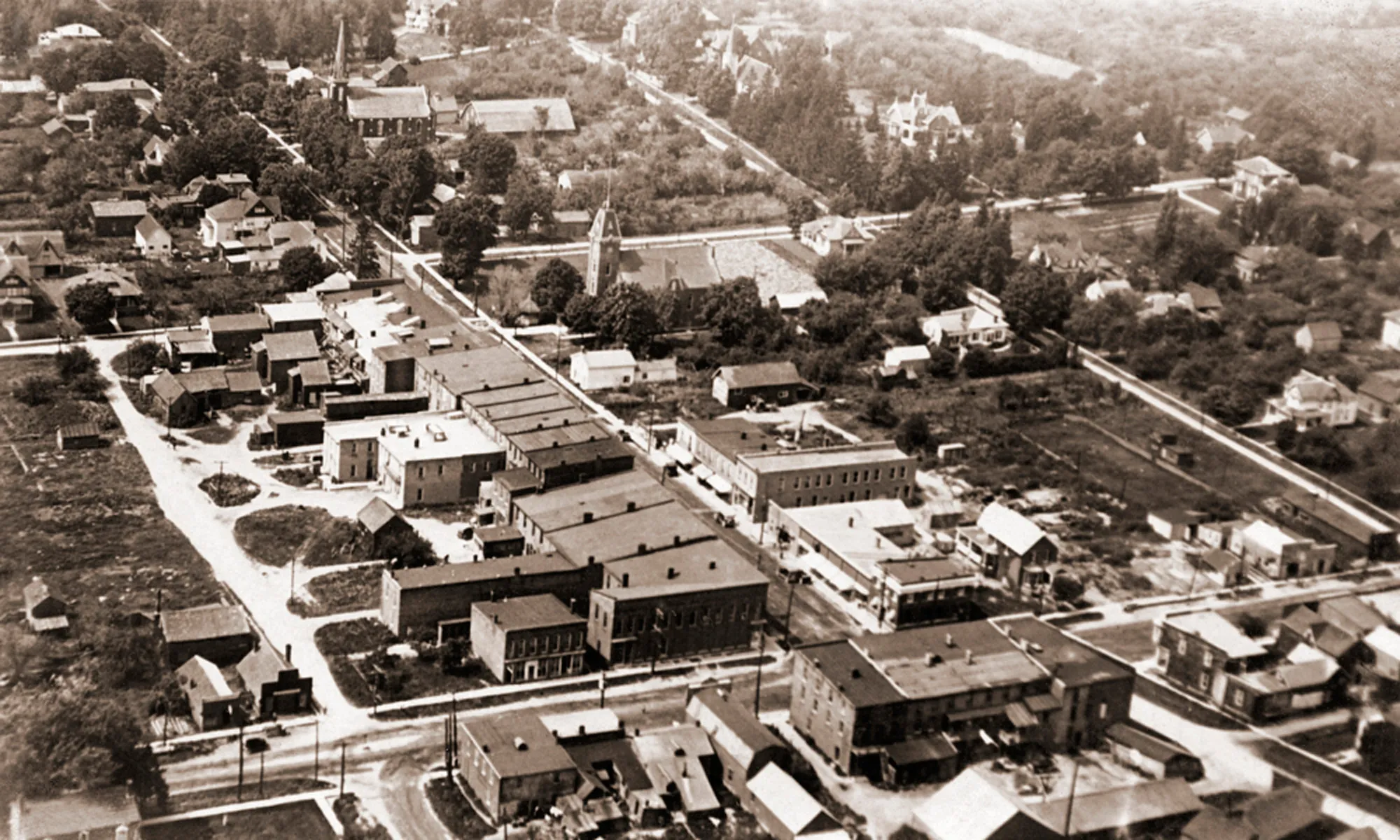
This undated aerial photo includes the Town Hall and Presbyterian Church steeples
Permanently settled by United Empire Loyalists in the late 1700s, the village was officially named Brighton on April 2, 1831. It knitted together the communities of Singleton’s Corners and Bettes Corners and a few other crossroads and hamlets. After all, these were the days of dirt roads, inns, stagecoaches, farming. and the lumber trade. Innumerable enterprises from sawmills to cattle ranchers to apple growers required the shipping capacities of the Gosport wharfs.
Soon, neighbouring villages up Percy Road (roughly today’s County Road 30) were growing apace: Codrington, Hilton, Orland and Cankerville all established mills, hotels, shops, blacksmiths, libraries, schools and churches. Farms were prosperous. To the east, Smithfield had its own railway station and in addition to farms, thrived with its many mills, stores, factories, a tannery, and the ubiquitous neighbourhood cheese factory.
In 1851, by claiming hived off portions of Murray and Cramahe townships and drawing in Gosport and eventually Presqu’ile, Brighton Township was created. From earliest times, of course, and to this day, it is the traditional territory of the Mississauga, Haudenosaunee and Anishinaabeg.
In the 1900s, agricultural and commercial enterprises continued to grow and the apple industry, with countless canneries over the years, anchored the economy. Fishing was plentiful at Presqu’ile and Gosport; boat building was developed along the shore. With the coming of not one but three train lines, the choice of transport shifted. The arrival of cars and trucks also reoriented services from livery stables and blacksmiths to mechanics and gas stations. Add to that, industry and tourism and the arts, and we begin to see a picture of Brighton today.
With the provincially mandated amalgamation of 2000, all these towns, hamlets, villages, and crossroads with their stories and historical roots were drawn together as the Municipality of Brighton. Within this geography we still travel in all directions of the compass to avail ourselves of the beauty of the waterfront to the magnificent rolling hills to visit beaches, farmgate markets, antique stores, and enjoy the sheer pleasure of the scenery.
Many of the early families of Brighton and the surrounding villages are still resident on their farms, in historical homes, at renovated Presqu’ile cottages. Others emigrated decades ago or days ago. Many are sharing their stories or those of their ancestors through vintage photos, fragile documents, and artifacts, and so we come to know and sustain the throughline of our history. As the saying goes, it takes a village. It took one centuries ago, and so it does today. Behind all this history is the vision and vibrancy of people. Brighton’s people.

